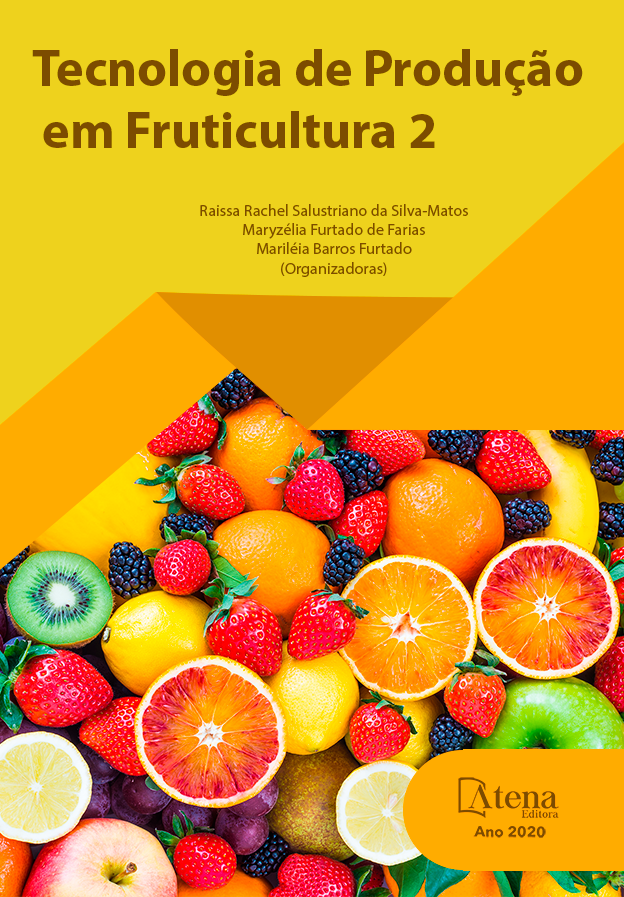
INFLUÊNCIA DO ESTÁGIO DE MATURAÇÃO E DO PERÍODO DE FERMENTAÇÃO SOBRE O TEOR DE CAFEÍNA E O RENDIMENTO DE SEMENTES SECAS DE GUARANÁ
Com o objetivo de avaliar as influências dos fatores estágio de maturação e período de fermentação sobre o teor de cafeína e o rendimento de sementes secas da cultivar de guaranazeiro BRS CG Maués, foi conduzido um experimento em delineamento DIC, 18 tratamentos e quatro repetições, em esquema fatorial (3 x 6), respectivamente, três estágios de maturação (E1 - frutos começando a pintar da cor característica da cultivar; E2 - frutos com aparência de maduros, porém, ainda não abertos; e, E3 - frutos maduros abertos, em ponto de colheita) x seis períodos de fermentação (0; 24; 48; 72; 96 e 120 horas). Os tratamentos foram dispostos em caixas de PVC (150 L), com tampas herméticas, um suspiro na parte superior. Após colheita, foram retiradas amostras do período zero e, após cada período de fermentação, amostras de 1,0 kg foram retiradas, suas sementes despolpadas, lavadas, secadas à sombra e conduzidas ao Laboratório Industrial da Jayoro, onde
foram secadas à estufa durante 16 horas a 110 oC, até atingirem umidade de cerca de 8 a 9%, preparadas e realizadas análises de cafeína. Os dados do rendimento de sementes secas e do teor de cafeína nelas foram submetidos a análise de variância e teste de médias (Tukey, p < 0,05) para análise do efeito do estágio de maturação, e análise de regressão, para efeito do tempo de fermentação, utilizando o software SISVAR (Ferreira, 2011). O período de fermentação não afetou o rendimento nem o teor de cafeína de sementes secas que foram coletadas em ponto de colheita (E2 e E3). É mais viável processar o guaraná sem a prática da fermentação.
INFLUÊNCIA DO ESTÁGIO DE MATURAÇÃO E DO PERÍODO DE FERMENTAÇÃO SOBRE O TEOR DE CAFEÍNA E O RENDIMENTO DE SEMENTES SECAS DE GUARANÁ
-
DOI: 10.22533/at.ed.50420011015
-
Palavras-chave: Paullinia cupana; pós-colheita; temperatura de fermentação.
-
Keywords: Paullinia cupana; post-harvest; fermentation temperature.
-
Abstract:
In order to evaluate the influences of the factors maturation stage and fermentation period on the caffeine content and the dry seed yield of the guaranazeiro cultivar BRS CG Maués, an experiment was carried out in a DIC design, 18 treatments and four repetitions, in factorial scheme (3 x 6), respectively, three stages of maturation (E1 - fruits beginning to paint the characteristic color of the cultivar; E2 - fruits with the appearance of ripe, but not yet open; and, E3 - open ripe fruits, in harvest point) x six fermentation periods (0; 24; 48; 72; 96 and 120 hours). The treatments were arranged in PVC boxes (150 L), with hermetic lids, a sigh at the top. After harvesting, samples from the zero period were taken and, after each fermentation period, 1.0 kg samples were taken, their seeds pulped, washed, dried in the shade and taken to Jayoro Industrial Laboratory, where they were dried in the oven for 16 hours at 110 oC, until they reached humidity of about 8 to 9%, and caffeine analyzes were prepared and performed. Data on dry seed yield and caffeine content were subjected to analysis of variance and test of means (Tukey, p < 0.05) to analyze the effect of the maturation stage, and regression analysis, for time effect. fermentation, using the SISVAR software (Ferreira, 2011). The fermentation period did not affect the yield or the caffeine content of dry seeds that were collected at the point of harvest (E2 and E3). It is more viable to process guarana without the practice of fermentation.
-
Número de páginas: 18
- Lucio Resende
- Enilson de Barros Silva
- Lucio Pereira S


